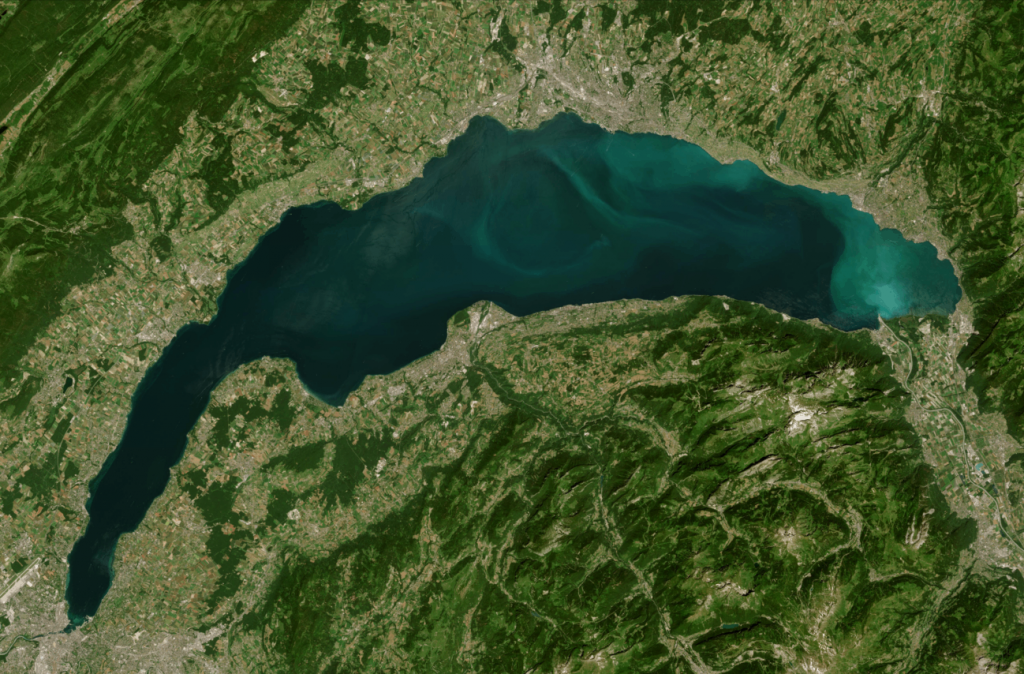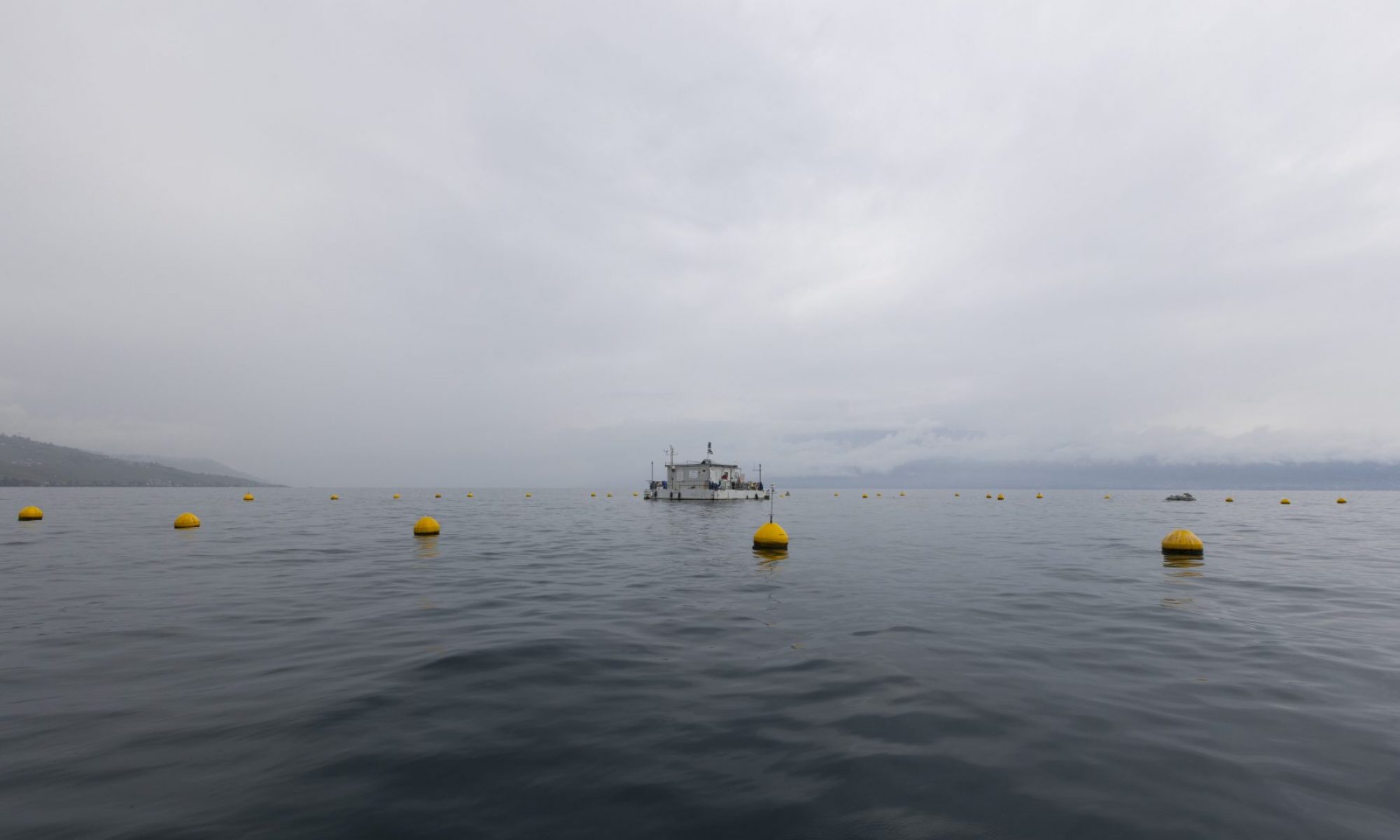Paper led by Nicolas just accepted in Journal of Geophysical Research: Biogeosciences.

Some lake waters can transiently and suddenly turn to a bright turquoise coloration, which results from the formation of fine particles of calcium carbonate (basically chalk) at their surface during so-called whiting events. While the primary mechanism operating in whiting events, i.e. calcium carbonate precipitation, is known, current knowledge does not explain well their timing, nor their patchy spatial distribution in large lakes. Herein we combined both large (from satellite data), medium- and small-scale observations, along with modelling, to investigate a whiting event in the largest lake of Western Europe, Lake Geneva. We show that this whiting event is a compound phenomenon whose timing is determined by a conjunction of specific thermal and geochemical conditions in both the river and lake waters. The spatial extent of the whiting depends on the lake water circulation, with a greater extension as the lake is more stratified. Our study gives supporting evidence to the tight coupling existing between lakes and their catchments and underscores an overlooked role of river-lake transition zones as important biogeochemical reactors.
Escoffier, N. , Perolo, P., Lambert, T., Rüegg, J., Odermatt, D., Adatte, T., Vennemann, T., Perga M.E. (in press). Whiting events in a large peri-alpine lake: Evidence of a catchment-scale process. Journal of Geophysical Research: Biogeosciences.
